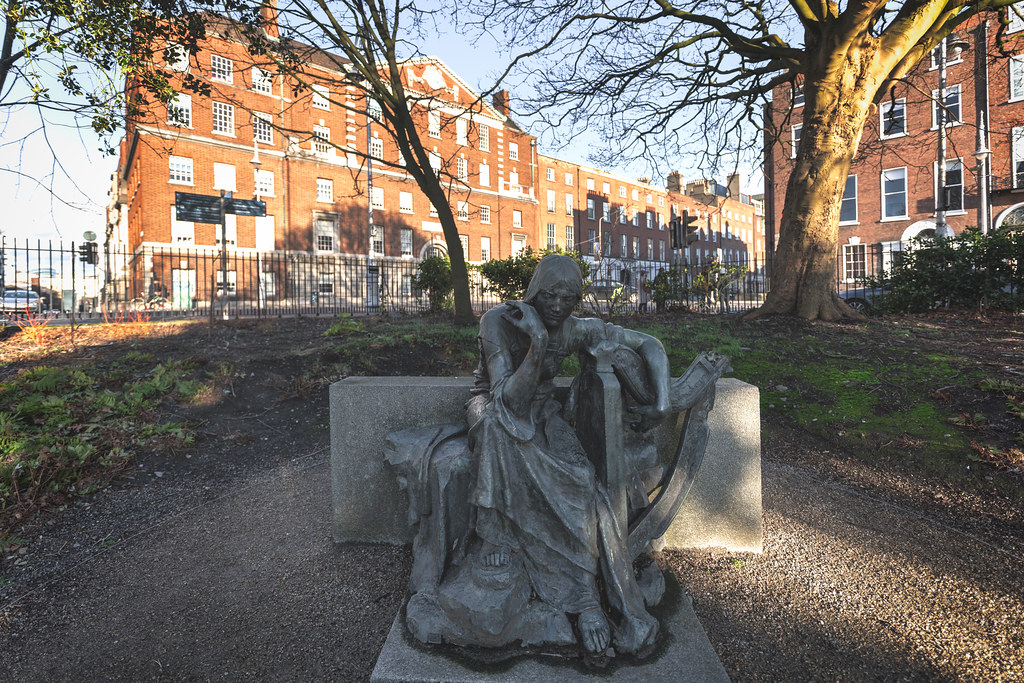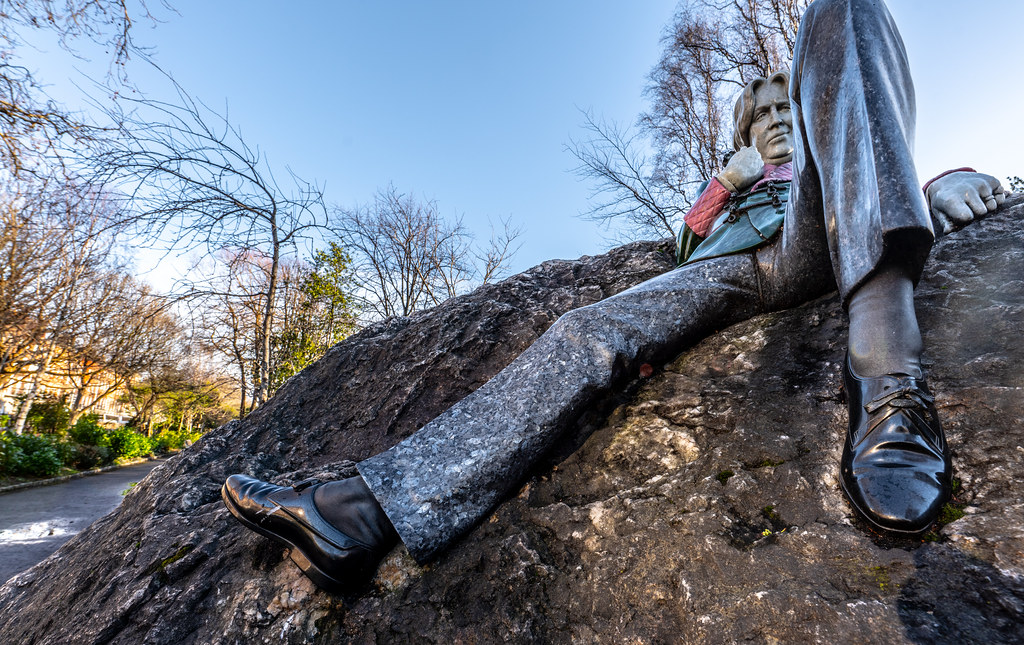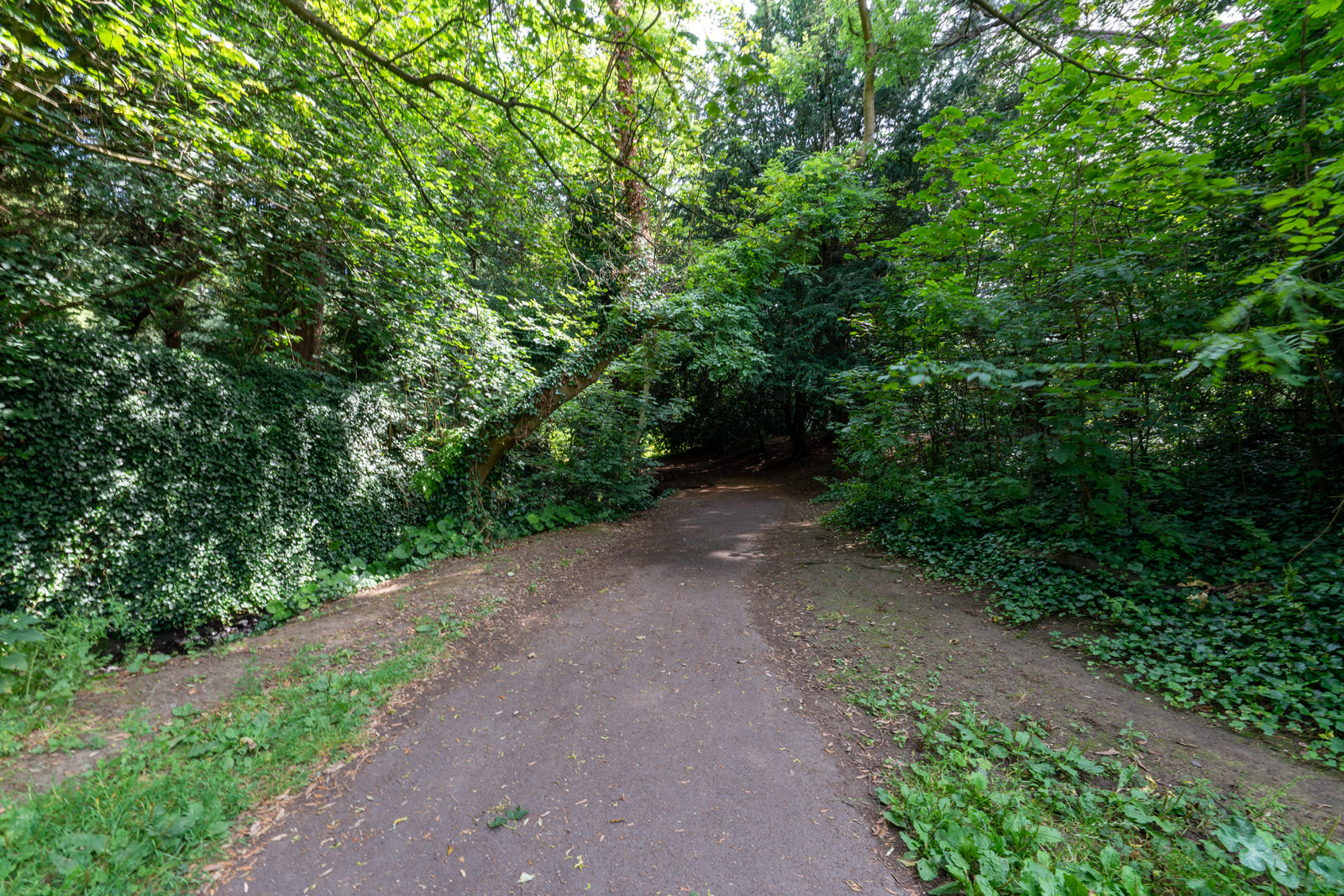MERRION SQUARE PARK Secondary text
THE IMAGES BELOW ARE SELECTABLE MENU OPTIONS
The square was laid out after 1762 and was largely complete by the beginning of the 19th century. The demand for such Georgian townhouse residences south of the River Liffey had been fuelled by the decision of the then Earl of Kildare (later the Duke of Leinster) to build his Dublin home on the then undeveloped southside. He constructed the largest aristocratic residence in Dublin, Leinster House, second only to Dublin Castle. As a result of this construction, three new residential squares appeared on the Southside: Merrion Square (facing the garden front of Leinster House), St Stephen's Green, and the smallest and last to be built, Fitzwilliam Square.
Aristocrats, bishops and the wealthy sold their northside townhouses and migrated to the new southside developments.
The earliest plan of the park shows a double line of trees around the perimeter which was later enclosed by railings in the early years of the 19th century. A Jardin Anglaise approach was adopted for the layout of the park with contoured grass areas, informal tree clumps, sunken curved paths and perimeter planting.
Up until the 1960s the park was only open to residents in possession of a private key. Now managed by Dublin City Council, the park contains a statue of Oscar Wilde, who resided in No. 1, Merrion Square from 1855 to 1876, many other sculptures and a collection of old Dublin lamp standards [no longer there]. The Irish American sculptor Jerome Connor, best known for his work Nuns of the Battlefield in Washington DC, designed the public art piece, "Eire". The park also contains a sculpture of a Joker's Chair in memory of Father Ted star Dermot Morgan.
The park in the square was called "Archbishop Ryan Park", after Dermot Ryan, the Catholic archbishop who transferred ownership to the city. In 2009, Dermot Ryan was criticised in the Murphy Report; in January 2010, Dublin City Council sought public views on renaming the Park. In September 2010, the City Council voted to rename the park as Merrion Square Park.
Aristocrats, bishops and the wealthy sold their northside townhouses and migrated to the new southside developments.
The earliest plan of the park shows a double line of trees around the perimeter which was later enclosed by railings in the early years of the 19th century. A Jardin Anglaise approach was adopted for the layout of the park with contoured grass areas, informal tree clumps, sunken curved paths and perimeter planting.
Up until the 1960s the park was only open to residents in possession of a private key. Now managed by Dublin City Council, the park contains a statue of Oscar Wilde, who resided in No. 1, Merrion Square from 1855 to 1876, many other sculptures and a collection of old Dublin lamp standards [no longer there]. The Irish American sculptor Jerome Connor, best known for his work Nuns of the Battlefield in Washington DC, designed the public art piece, "Eire". The park also contains a sculpture of a Joker's Chair in memory of Father Ted star Dermot Morgan.
The park in the square was called "Archbishop Ryan Park", after Dermot Ryan, the Catholic archbishop who transferred ownership to the city. In 2009, Dermot Ryan was criticised in the Murphy Report; in January 2010, Dublin City Council sought public views on renaming the Park. In September 2010, the City Council voted to rename the park as Merrion Square Park.
You will find links to buy products from Amazon, Google and other partners. If you click on these links, you’ll find that the URL includes a small extra piece of text which identifies that the click came from my websites. This text is an affiliate code, and it means that I get a small percentage of the money you spend if you choose to buy that product, or, in some cases, other products from the site soon after. These affiliate links help pay the costs of producing my websites and ensure that the content is free to you.
COPYRIGHT INFORMATION BELOW APPLIES ONLY TO PHOTOGRAPHS

This work by William Murphy aka Infomatique is licensed under a Creative Commons Attribution-NonCommercial-ShareAlike 4.0 International License.
Permissions beyond the scope of this license may be available at https://excellentstreetimages.com/in-the-year-twentytwenty/copyright/.






